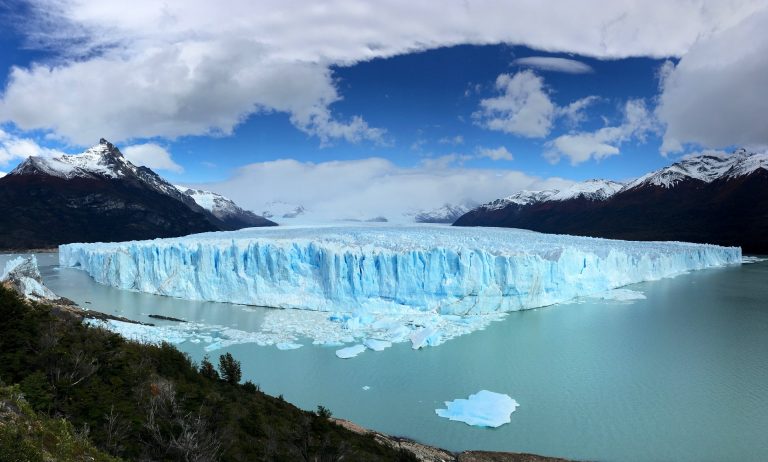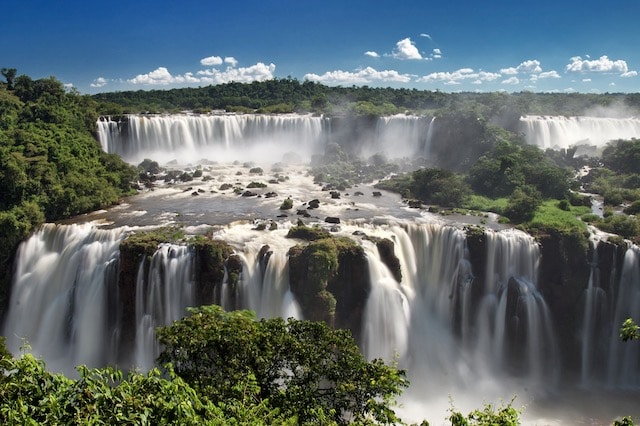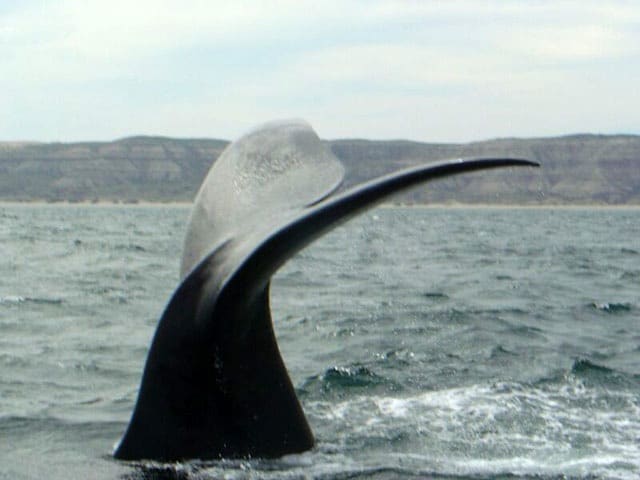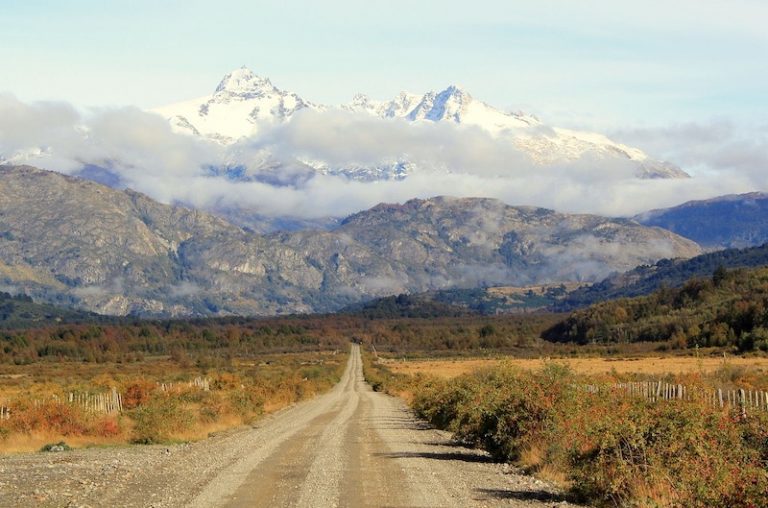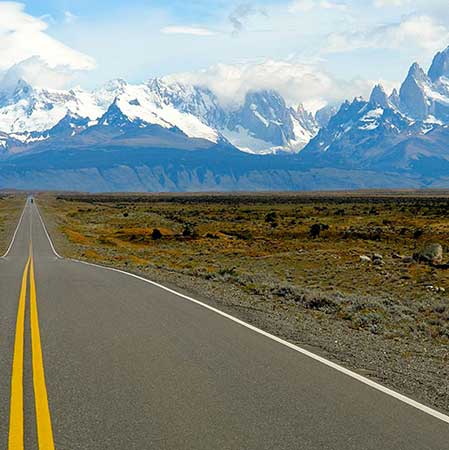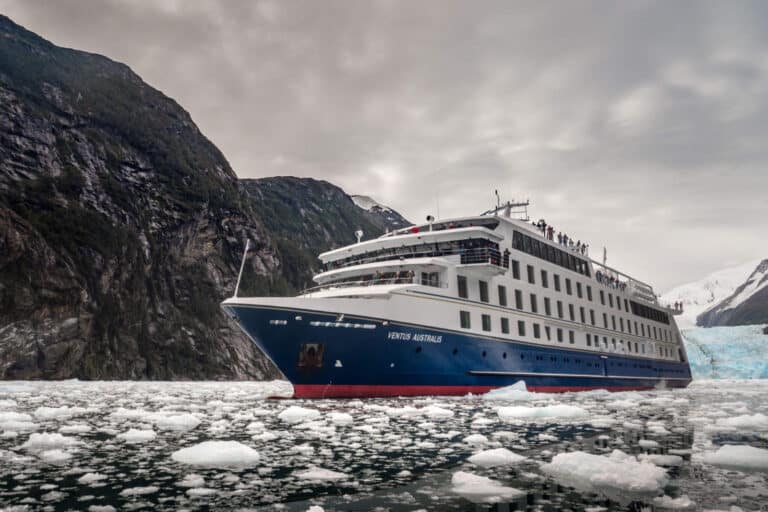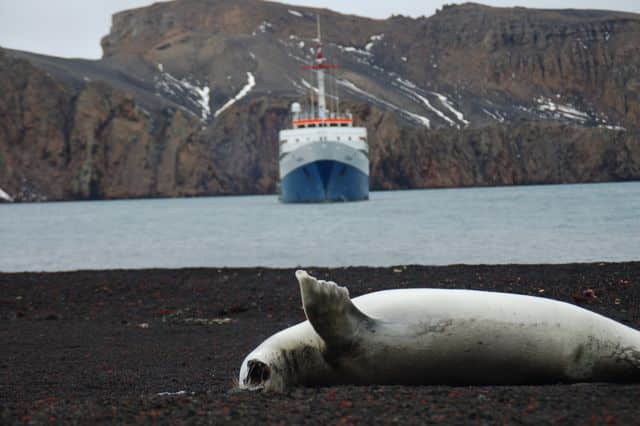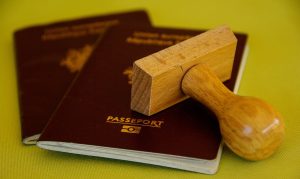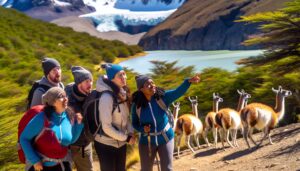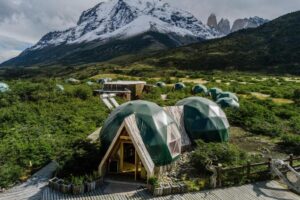Imagine standing amidst towering glaciers, observing unique wildlife, and trekking through some of the most breathtaking landscapes on Earth. Welcome to Patagonia, a vast and diverse region stretching across southern Argentina and Chile. This incredible destination, located at the southern tip of South America, offers an unforgettable adventure for nature lovers and outdoor enthusiasts alike. In this comprehensive guide, we’ll share insider tips and first-hand experiences to help you with planning a trip to Patagonia, ensuring the perfect Patagonian journey.
Key Takeaways
- Planning a trip to Patagonia? Get the best out of your experience with tips on when to visit, transportation options and accommodation choices.
- Explore iconic sights like W Trek, Perito Moreno Glacier & Laguna de los Tres by creating an itinerary tailored for one week, two weeks or three weeks.
- Strategically planning and optimizing your itinerary can lead to significant savings!
Best Time to Visit Patagonia
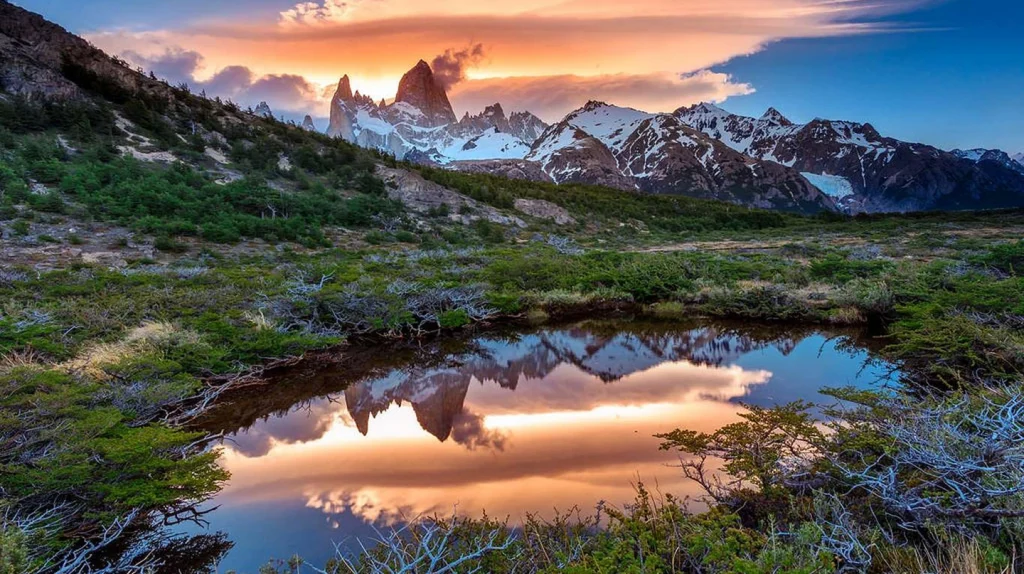
Choosing the right time to visit Patagonia can significantly impact your trip experience. The region’s weather and tourist influx vary throughout the year, influencing the availability of outdoor activities and accommodations. So, when should you embark on your Patagonian adventure?
We will discuss the pros and cons of visiting during different seasons.
High Season: December to February
The high season in Patagonia runs from December to February, coinciding with the Patagonian summer. Warm temperatures reach up to 22°C (72°F), perfect for outdoor activities like hiking in Torres del Paine National Park or exploring the breathtaking Chilean fjords. Wildlife enthusiasts will also enjoy spotting penguins and guanacos during these months.
However, the high season comes with its drawbacks. Popular destinations like Torres del Paine and Tierra del Fuego can get crowded, with limited availability of accommodations and packed hiking trails. Moreover, Patagonia’s unpredictable weather means you might experience sudden changes, even during the summer season. You could encounter:
- Sunny skies
- Cool breezes
- Rain
- Snow
All in one day.
Despite the challenges, visiting Patagonia during the high season ensures you’ll be able to participate in numerous outdoor activities while enjoying the region’s stunning landscapes. Just be prepared for rapidly changing weather and high tourist traffic.
Shoulder Season: September to November and March to April
If you prefer a more tranquil experience, consider visiting Patagonia during the shoulder season, which spans from September to November and March to April. During these months, you’ll encounter fewer crowds and still enjoy pleasant temperatures that range from the high 50s to the low 60s Fahrenheit (14-18°C).
The shoulder season also offers a unique opportunity to witness the region’s stunning landscapes as they transition between seasons. In spring (September-November), wildflowers bloom and fill the valleys with vibrant colors. Fall (March-April) brings a palette of warm hues as the foliage changes, painting the landscape in shades of red, orange, and yellow.
Keep in mind that the shoulder season may bring more rain than the summer months, with June being the wettest month. Nevertheless, the shoulder season’s milder temperatures, fewer crowds, and beautiful scenery make it an appealing time to visit Patagonia.
Low Season: June to August
While it may be tempting to visit Patagonia during the low season (June to August) to avoid the crowds, we would advise against it. The winter months bring heavy snowfall, resulting in closed hiking trails and reduced transportation schedules. Accommodations may also be limited during this period.
Temperatures during the low season range between the 30s to 60s Fahrenheit (3-18 degrees Celsius), adding to the challenges of exploring the region. For these reasons, it’s best to plan your Patagonian adventure during the high or shoulder seasons to fully enjoy the region’s activities and attractions.
Getting to Patagonia: Transportation Options
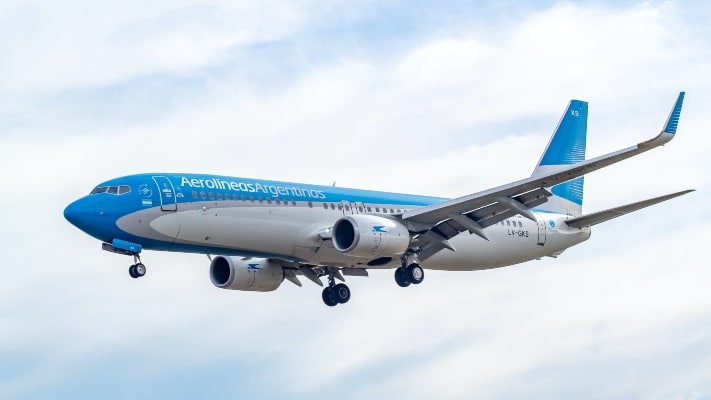
When planning your trip to Patagonia, you’ll need to consider transportation options to navigate the region’s vast distances. The most popular choices include flying, bus travel, and ferry travel. Each option offers distinct advantages and drawbacks, so let’s examine them to help you make the best decision for your Patagonian journey.
Flying is the fastest way to get around Patagonia, but it can be expensive. Bus
Flying to Patagonia
Flying is the most convenient and time-saving option for reaching Patagonia, especially if you have limited time to explore the region. Major cities like Santiago, Chile, and Buenos Aires, Argentina, offer flights to popular destinations such as:
- Puerto Madryn
- El Calafate
- Punta Arenas (for southern Chilean Patagonia)
- Ushuaia (for southern Argentine Patagonia)
Airlines such as Jetsmart, Sky Airline, and LATAM operate flights to various Patagonian airports in Chile. And Aerolineas Argentinas covers most of the flights within Argentina along with the low cost companies Flybondy and Jetsmart.
Booking flights in advance is recommended due to potential price and availability fluctuations throughout the year. To compare flight prices, consider using websites like Skyscanner.com.
While flying is the fastest option, it may not be the most cost-effective. Additionally, some remote destinations in Patagonia may not have air connections, necessitating alternative transportation methods to reach them.
Bus Travel in Patagonia
Bus travel is an affordable alternative to flying, though it can be time-consuming due to the region’s vast distances. Despite the long travel times, buses in Patagonia are generally comfortable and punctual, ensuring a pleasant journey.
Purchasing bus tickets can be done directly at bus stations or online via websites like BusBud.com. Be prepared for border crossing between Argentina and Chile, as they may require additional time and documentation checks.
While bus travel allows you to save on transportation costs, it may not be the most efficient method if you have limited time in Patagonia. Travel fatigue may also be a concern, as some bus journeys can span multiple days.
Ferry Travel in Patagonia
Ferry travel in Patagonia is a less common option, with limited connections available. However, it offers a unique and leisurely way to explore the region’s stunning landscapes, especially the Chilean fjords.
Though ferry travel may be slower and less frequent than other transportation options, it provides a memorable experience for those seeking a more intimate connection with Patagonia’s natural beauty. It’s an excellent choice if you have ample time to explore the region and prefer a slower-paced journey.
Accommodation Choices in Patagonia
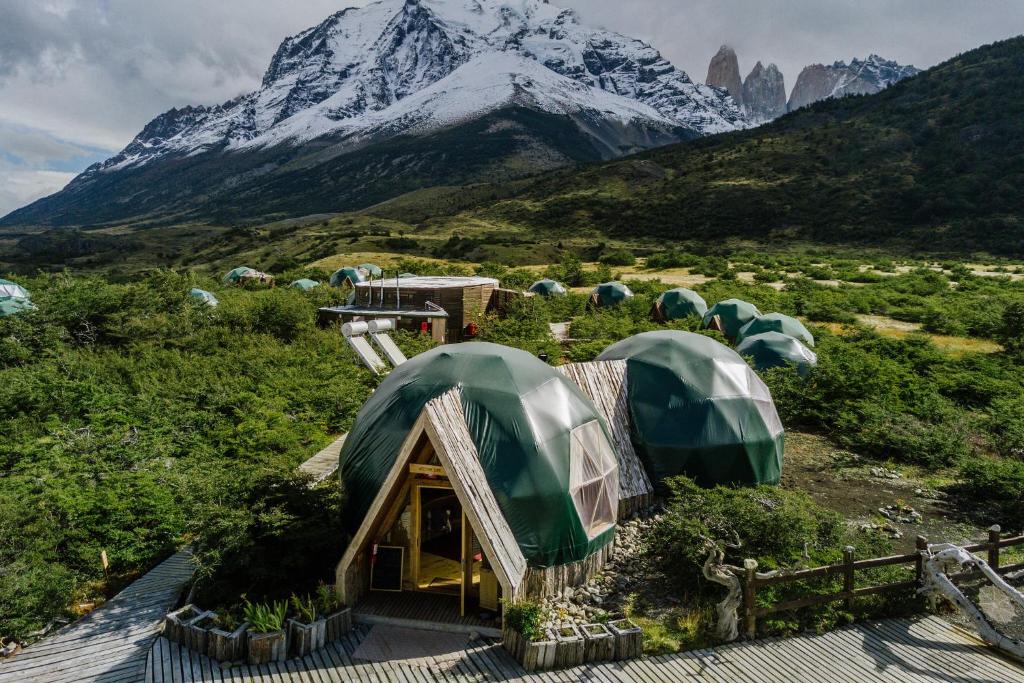
Your Patagonian adventure will require comfortable and convenient accommodations to rest and recharge after a day of exploration. Fortunately, the region offers a variety of options to suit different budgets and preferences, from budget-friendly hostels and guesthouses to mid-range hotels and luxury resorts.
We will examine the range of lodging options available in Patagonia.
Budget Accommodations
For travelers on a tight budget, hostels and guesthouses offer affordable lodging options without breaking the bank. These accommodations typically provide dorm-style rooms or private rooms with shared facilities. You can find hostels in popular destinations like El Calafate, El Chalten, and Puerto Madryn.
To search for budget accommodations, use websites like Booking.com and Hostelworld.com. Keep in mind that prices may vary depending on the season, so it’s essential to book in advance to secure the best deals.
Mid-Range Accommodations
Mid-range accommodations offer a balance between affordability and comfort, providing amenities like free Wi-Fi, daily breakfast, and in-room conveniences. These hotels often feature on-site restaurants, shared lounges, and communal terraces, allowing you to unwind and socialize with fellow travelers.
Some popular mid-range options in Patagonia include Tierra de Leyendas in Ushuaia and Peninsula Petit Hotel in San Carlos de Bariloche. Prices for mid-range accommodations generally range from $60 to $150 per night, depending on the location and amenities offered.
Reviewing cancellation policies is a must when booking mid-range accommodations since these can vary among properties. Plan carefully and book in advance to ensure you find the perfect fit for your Patagonian adventure.
Luxury Accommodations
For travelers seeking a more indulgent experience, luxury resorts and lodges in Patagonia offer top-notch services and facilities. These high-end accommodations often feature private excursions, luxury spa facilities, and secluded locations, ensuring an unforgettable stay.
EcoCamp Patagonia, for example, is an extraordinary eco-dome property that provides a unique lodging experience amidst the stunning landscapes of Torres del Paine National Park. Other luxury options, such as Tierra Patagonia and Awasi, are known for their incredible views, exclusive services, and personalized experiences.
For those seeking a unique and luxurious outdoor experience, consider glamping in Patagonia. Glamping, or glamorous camping, combines the thrill of camping with the comforts of a hotel. Imagine waking up in a comfortable bed, stepping outside your tent, and being greeted by the breathtaking landscapes of Patagonia. This experience is offered by several providers in the region, allowing you to immerse yourself in nature without sacrificing comfort. For more information on this ultimate outdoor adventure, check out this Patagonia glamping guide.
Luxury accommodations may come with a higher price tag, but the exceptional service, breathtaking surroundings, and exclusive experiences make them well worth the investment for a truly unforgettable Patagonian journey.
Essential Activities and Attractions
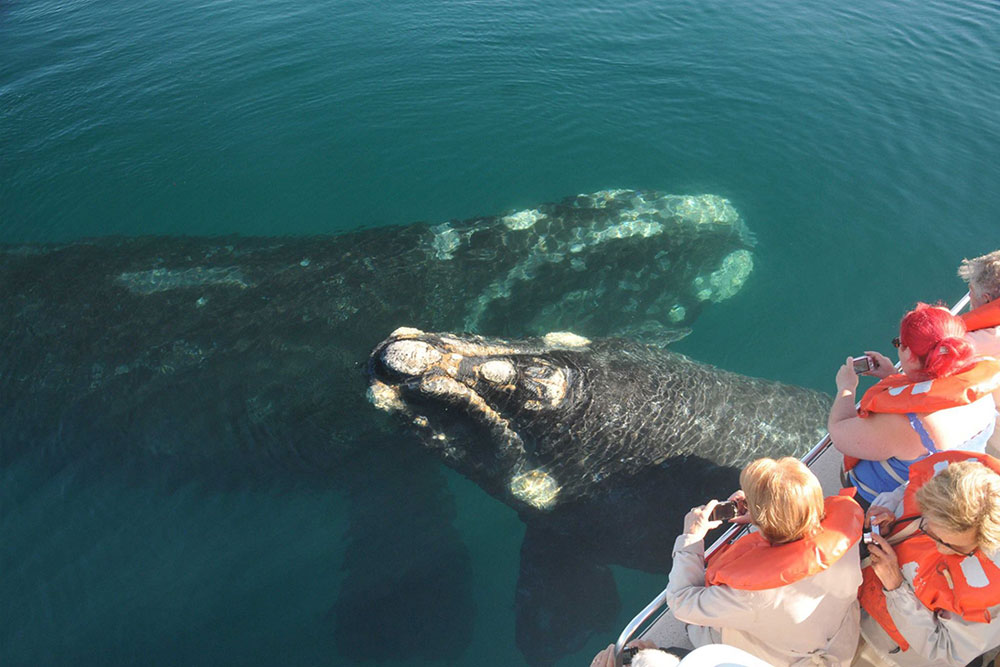
A trip to Patagonia offers a wealth of opportunities to explore diverse landscapes, encounter unique wildlife, and immerse yourself in the region’s rich culture. To make the most of your Patagonian adventure, consider incorporating essential activities and attractions into your itinerary, such as:
- Hiking in the stunning national parks
- Wildlife encounters, including penguin colonies and whale watching
- Glacier exploration, with visits to Perito Moreno and other impressive glaciers
By including these activities, you’ll have an unforgettable experience in Patagonia.
We will delve into these unforgettable activities.
Hiking and Trekking
Hiking is an essential activity for any Patagonian adventure, allowing you to discover the region’s stunning national parks and landscapes up close. Whether you’re a seasoned trekker or a casual hiker, Patagonia offers trails to suit all abilities and interests.
Torres del Paine National Park in Chilean Patagonia is a popular destination for hikers, boasting iconic trails like the W trek and the O Circuit. In Argentine Patagonia, Los Glaciares National Park offers equally stunning hikes, such as the Laguna de los Tres trail and the Laguna Cerro Torre trek.
Regardless of your chosen trail, always ensure you’re prepared with appropriate hiking gear, sufficient supplies, and a respect for the environment. Hiking in Patagonia is an unforgettable experience that will leave you in awe of the region’s natural beauty.
Wildlife Encounters
Patagonia’s diverse ecosystems are home to a wide array of unique wildlife, making it a fantastic destination for nature enthusiasts. Some of the wildlife you can encounter in the region includes:
- Penguins
- Whales
- Guanacos
- Sea lions
These are just a few examples of the incredible wildlife you can see in Patagonia, offering you the opportunity for once-in-a-lifetime encounters.
Punta Tombo peninsula is the top spot for penguin-spotting, with the best viewing months between September and April. Whale watching is another popular activity, particularly in Peninsula Valdes from June to December, during the whales’ mating season.
Remember to always maintain a respectful distance and follow local guidelines when observing wildlife. Your responsible behavior will help protect these incredible creatures and ensure future generations can enjoy the same thrilling encounters.
Glacier Exploration
A visit to Patagonia is incomplete without exploring its awe-inspiring glaciers. Perito Moreno Glacierin Argentine Patagonia and Grey Glacier in Chilean Patagonia are two of the most impressive and accessible glaciers in the region.
Various tour operators offer day trips to these glaciers, with options for guided hikes, boat tours, and even ice trekking. No matter which option you choose, witnessing the sheer size and beauty of these ancient ice formations is a once-in-a-lifetime experience not to be missed on your Patagonian journey.
Planning Your Patagonia Itinerary
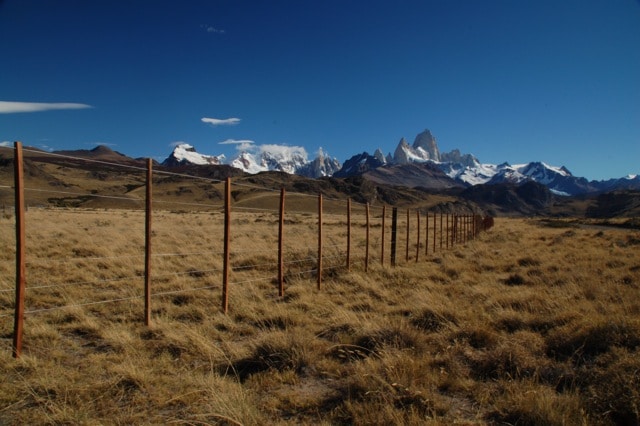
With so much to see and do in Patagonia, planning your itinerary can be both exciting and challenging. To help you make the most of your time in this vast and diverse region, we’ve created suggested itineraries for one-week, two-week, and three-week trips.
These itineraries can serve as a starting point for your own custom Patagonian adventure, tailored to your interests and available time.
One Week Itinerary
With just one week in Patagonia, you’ll want to focus on the region’s key highlights. Flying from Santiago or Buenos Aires to popular destinations like Torres del Paine National Park or Los Glaciares National Park will maximize your time for exploration.
In Torres del Paine, you can undertake the famous W trek, a 3-5 day hike that covers some of the park’s most iconic sights. In Los Glaciares National Park, a visit to the stunning Perito Moreno Glacier and a hike to Laguna de los Tres near El Chaltén are must-do experiences.
By focusing on these key attractions, you’ll make the most of your limited time in Patagonia.
Two Week Itinerary
With two weeks in Patagonia, you can delve deeper into the region’s diverse landscapes and attractions. In addition to the highlights mentioned in the one-week itinerary, consider exploring the Chilean fjords and the Carretera Austral, a scenic route that stretches over 1,200 kilometers through southern Chile.
The Carretera Austral offers access to remote national parks, glacier-fed lakes, and dramatic mountain landscapes. Highlights along the route include Pumalin Park, Queulat National Park, Cerro Castillo, and the Marble Caves. A two-week itinerary allows you to immerse yourself in Patagonia’s natural beauty and experience a more extensive range of attractions.
Three Week Itinerary
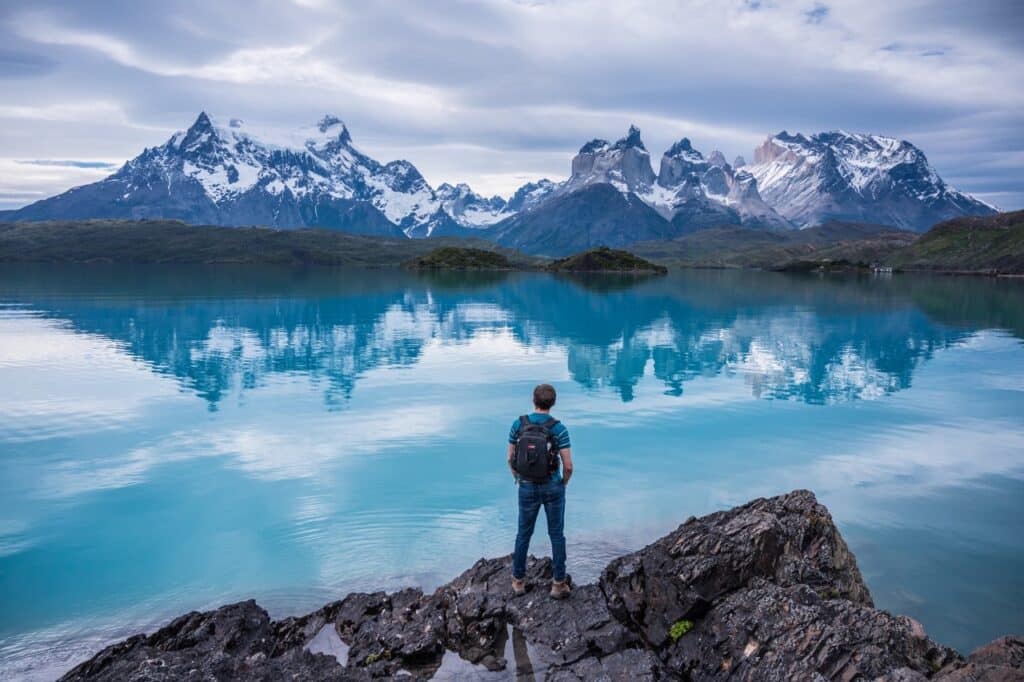
A three-week trip to Patagonia provides ample time to fully immerse yourself in the region’s diverse landscapes, wildlife, and culture. In addition to the destinations covered in the shorter itineraries, consider visiting Tierra del Fuego, the southernmost region of South America.
Ushuaia, the southernmost city in the world, offers unique experiences like walking with penguins and cruising the Beagle Channel. Additionally, the Lake District region of both Chile and Argentina, located near the snow capped mountains of the Andes Mountains, features picturesque lakes, quaint towns, and opportunities for outdoor activities such as hiking, fishing, and skiing.
With three weeks to explore Patagonia, you can truly experience the region’s incredible variety and create lasting memories.
Budgeting for Your Patagonia Trip
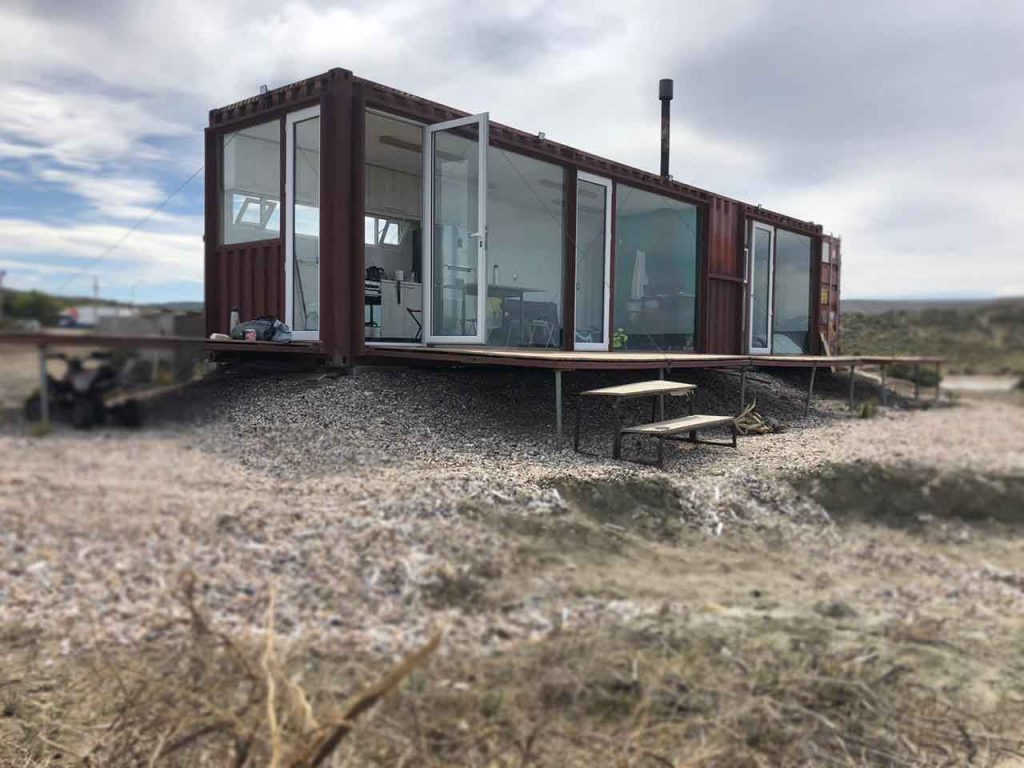
Planning your Patagonian adventure requires budgeting for the following expenses:
- Accommodation
- Transportation
- Food
- Activities
Expenses can significantly differ based on your travel style and preferences, emphasizing the need for advanced planning and informed decision-making to optimize your budget.
To help you save money and make the most of your trip, we’ve compiled a list of money-saving tips that can be applied throughout your Patagonian journey.
Money Saving Tips
Budget-conscious travelers can save on costs by:
- Staying at hostels and guesthouses, which offer affordable accommodation options without compromising on comfort
- Cooking their own meals, which can significantly reduce food expenses
- Taking advantage of communal kitchens provided by many hostels and guesthouses, allowing them to prepare meals with local ingredients purchased from nearby markets or grocery stores.
Hitchhiking is another money-saving option for transportation within Patagonia. While not suitable for everyone, hitchhiking can provide a unique and cost-effective way to explore the region.
Lastly, being flexible with your transportation choices can help you find the best deals on bus tickets, flights, and rental cars. By implementing these money-saving tips, you can make your Patagonian adventure more affordable and enjoyable without sacrificing unforgettable experiences, including finding a great deal on a rental car.
Custom Itinerary Planning with a Patagonian Native
If you’re feeling overwhelmed with planning your trip to Patagonia, don’t worry, I’m here to help! Born and raised in Patagonia, I have over 20 years of experience organizing trips to both Argentine and Chilean Patagonia. With my deep knowledge and understanding of this region, I can help you plan a custom itinerary that will ensure you see the best of what Patagonia has to offer, tailored to your interests and preferences. Let’s make your Patagonian journey an unforgettable adventure!
Summary
Patagonia’s awe-inspiring landscapes, unique wildlife, and diverse outdoor activities make it a truly unforgettable destination. From the towering peaks of Torres del Paine to the stunning fjords of southern Chile, there’s something for every traveler in this vast and captivating region. By carefully planning your itinerary, budget, and travel arrangements, you can make the most of your Patagonian adventure and create lasting memories.
We hope this comprehensive guide has provided you with the information and inspiration you need to embark on your own Patagonian journey. With careful planning and responsible tourism practices, you’ll be well on your way to experiencing the trip of a lifetime in one of the world’s most breathtaking regions.
Frequently Asked Questions
How many days do you need for Patagonia?
If you wish to explore all the highlights of Patagonia, plan for at least 7-10 days to fully take in its breathtaking 409,500 sq miles. By doing so, you’ll get to visit places like Torres del Paine, Tierra del Fuego, the Perito Moreno glacier (Argentina), El Chaltén (Argentina) and the Carretera Austral (Chile).
What is the best month to visit Patagonia?
For an unforgettable Patagonia experience, plan your trip between November and March!
How far in advance should you plan a trip to Patagonia?
Book your tickets six months in advance if travelling to Patagonia during December to February, and three months ahead for other high season months.
What time of year should I visit Patagonia?
The best time to visit Patagonia is from November to March, when the weather is mild and you can experience its stunning landscapes and pristine wilderness in their full splendor.
How can I get to Patagonia?
You can get to Patagonia by flying.
My organised trips to Patagonia
In the carousel below you can see already assembled itineraries for inspiration, click on the one you are interested in and ask me for a quote.
Compact trip through the southernmost Argentinean Patagonia: Ushuaia and El Calafate
Enjoy the 3 most relevant ecosystems in Argentina: The End of the World, The Glaciers and the Iguazu Falls.
Trip to Patagonia Argentina in 7 days touring the most beautiful landscapes of Patagonia Argentina (Peninsula Valdés & El Calafate)
The Carretera Austral by rental car is probably one of the most spectacular routes in Patagonia, designed to be travelled with plenty of time in your rental car.
Tour along Route 40 in Patagonia, starting on Route 3 on the Atlantic coast and continuing along Route 40 until reaching the Andes Mountains and El Calafate.
The Australis Cruises are Expedition Cruises that sail through the Strait of Magellan and the Beagle Channel, exploring one of the most beautiful and unspoiled regions of the world such as Patagonia and Tierra del Fuego.
The Antarctic Cruise aboard the MV USHUAIA offers you an incredible introduction to the 'White Continent' at a reasonable price.



